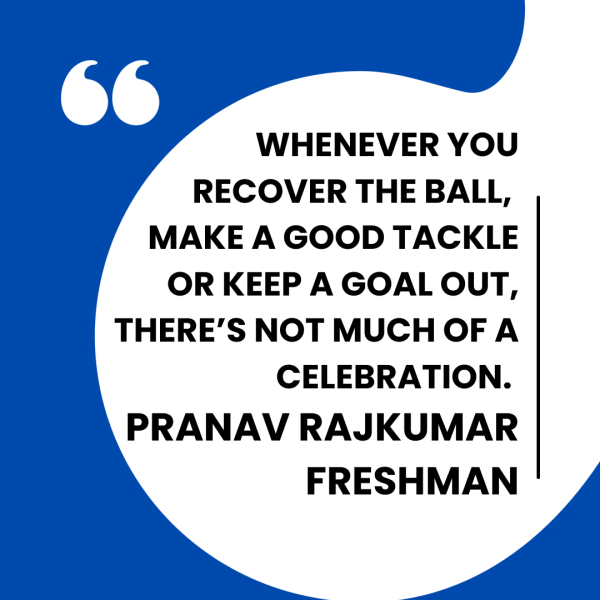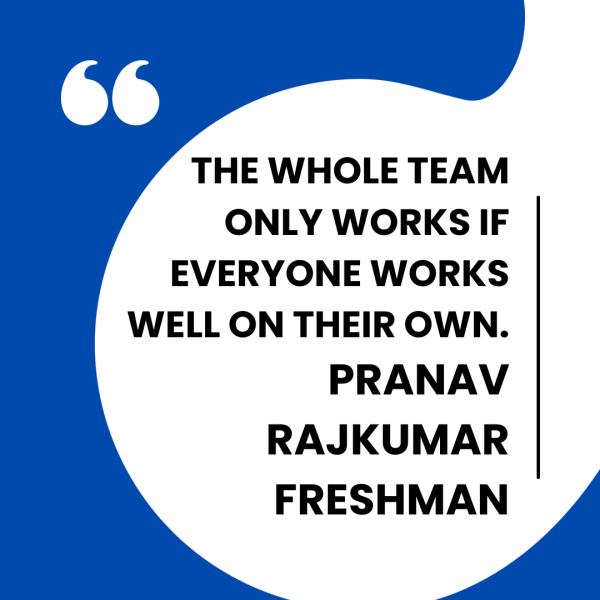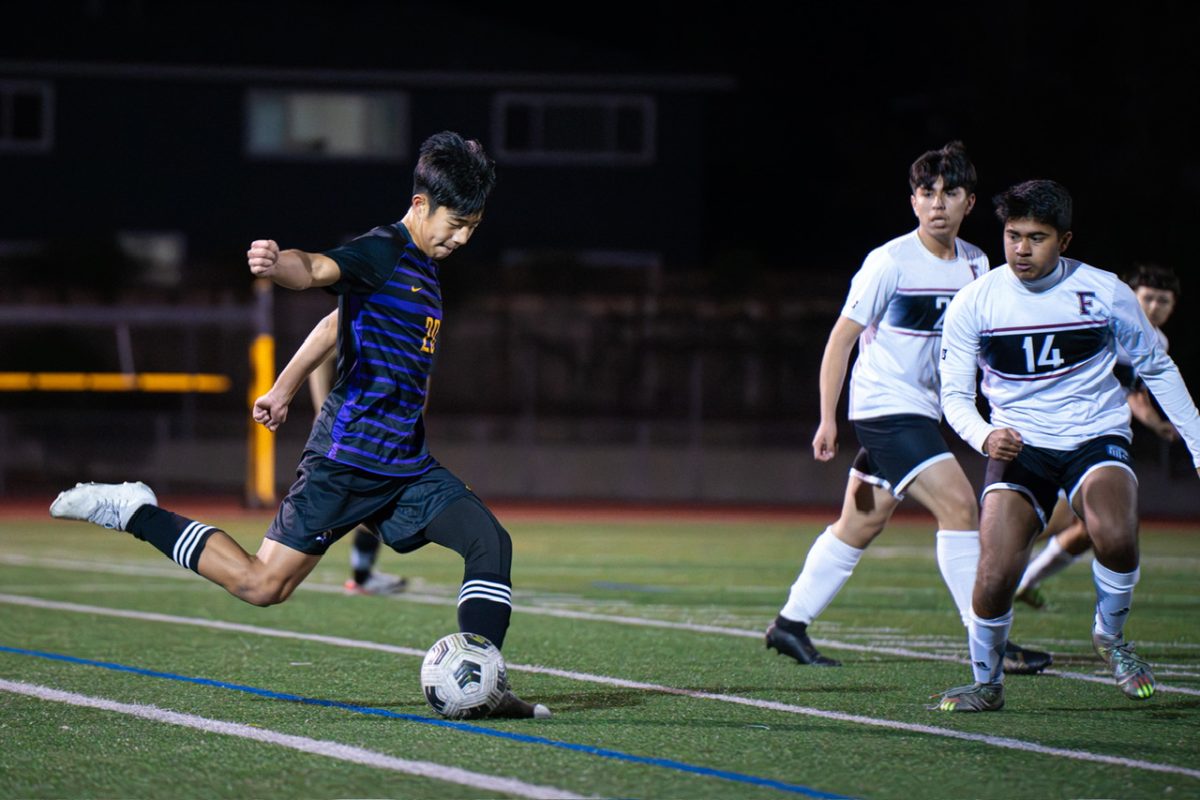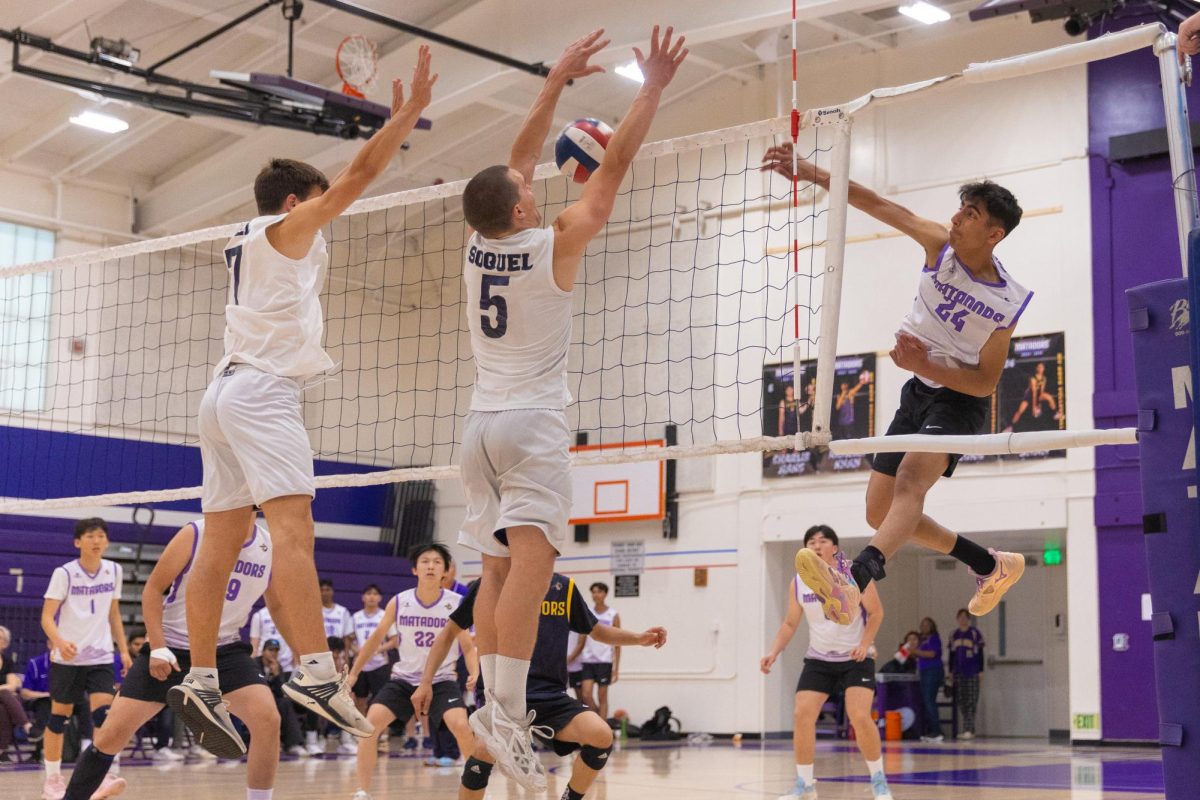With 11 players from each team on the soccer field, sophomore and soccer fan Vaikunth Vasu finds there are many moving parts for an audience to focus on at one time. Out of the eleven, there are typically six to eight offensive players and three to five defensive players. The main offensive players are strikers, who score points by kicking the ball into the goal. The main defensive players are fullbacks, positioned along the outer edge of the field to stop strikers from attacking, and center-backs, who stand near their goal and block strikers from breaking through to score. Vasu notes that some positions seem similar and may even shift around during a play.
“It’s pretty easy for me to understand what’s happening because I’ve been watching soccer for years, but for some people, they may be concerned, like ‘what’s happening? What’s the goal of this game?’” Vasu said.
Due to this confusion, certain players are easily overshadowed by others. Freshman and fullback Riley Chow says his position is not as well-known as other soccer positions. In fact, Chow believes there is a lack of regard for defenders in general.
“Center-backs are more recognized than even fullbacks, but I think the midfield[ers] and [offensive players] get most of the attention on the field,” Chow said.
Freshman and center-back Pranav Rajkumar agrees, mentioning how defenders and goalkeepers do not receive the praise they deserve. As someone who is used to playing both offense and defense, he has experienced firsthand the contrast in the treatment he receives while playing different positions. 
“Sometimes it’s annoying that whenever attackers score a goal, there’s a huge celebration, but whenever you recover the ball, make a good tackle or keep a goal out, there’s not really much of a celebration,” Rajkumar said. “[Defenders] don’t get appreciated as much.”
Moreover, Rajkumar believes that many fans do not recognize the mental strain of being on defense. As a center-back, Rajkumar’s role is to act as the captain of defense, one of the last players standing between an opposing team’s striker and the goal. As such, when the opposing team does score, he says it is common for him to take the fall.
“It’s a very [pressuring] position since you’re always the last man,” Rajkumar said. “You have to have a calm head because every mistake you make is basically a free goal for the other team.”
While Chow admits he may not be actively scoring points for the team, he is happy to play fullback. He states the lack of attention on him is not a problem because he knows he is doing something to help his team succeed. Rajkumar has a similar outlook on the defensive position he plays. He is proud that his position enables him to work seamlessly with his teammates to stop opponents from scoring.
“Teamwork is very important — especially in a defensive role — because we have to communicate with each other on the field and we have to stay on the same page in what we’re doing,” Rajkumar said. “We have to notice what the other players around us are doing as well before we make decisions.”
Vasu, who watches soccer games every weekend and plays soccer for fun on a daily basis, emphasizes how the sport is entertaining to watch because of its fast-paced nature and the skills of the various players. 
“They’re playing on that stage for a reason because they’re really good,” Vasu said. “They have to get there from practice. They’re [on] a whole new level.”
While there may be a discrepancy in the recognition of offensive and defensive players, Rajkumar believes one thing remains certain: playing his hardest and being able to work with his teammates as one cohesive unit is the most enjoyable part of soccer, no matter what position he plays.
“If everybody does what they’re supposed to do, positions themselves and passes accurately, then the whole team works together,” Rajkumar said. “The whole team only works if everyone works well on their own.”










